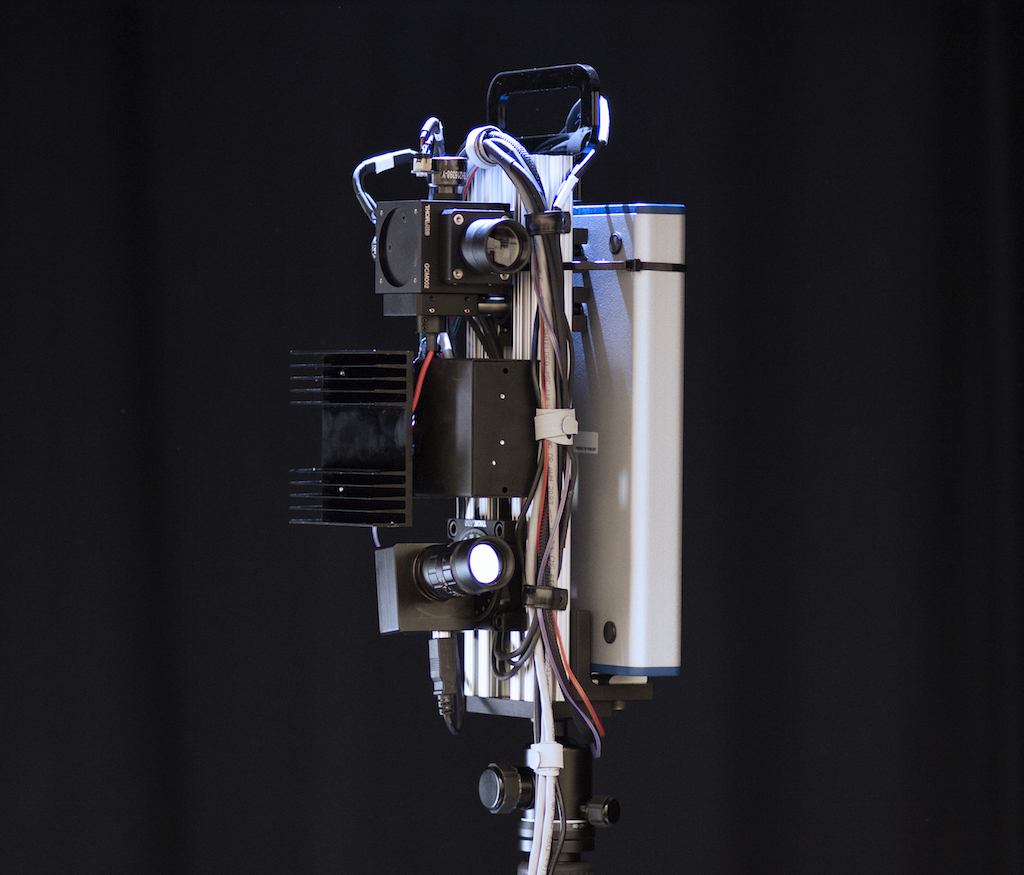A group at Northwestern University near Chicago is developing a new type of 3D scanning technology that should increase reliability and usability.
Most 3D scanners of today use a structured light approach, in which beams of light are projected onto an object’s surface. Since the patterns of light are known (structured), their distorted appearance on the object’s surface can indicate the 3D shape – or depth – and be transformed into a 3D model.
The major issue with this approach is that light beams can easily be overwhelmed by ambient light sources. A bright light can wash out the patterned lines of light leading to inaccurate scans. And don’t even think about trying this approach outside in the sunlight.
Now a group from the Comp Photo Lab at Northwestern University has developed a new approach that appears to overcome this problem.
The MC3D, or “Motion Contrast 3D Laser Scanner” uses a technique that’s different from current approaches. They explain:
The technique utilizes motion contrast cameras that sense temporal gradients asynchronously, i.e., independently for each pixel, a property that minimizes redundant sampling. This allows laser scanning resolution with single-shot speed, even in the presence of strong ambient illumination, significant inter-reflections, and highly reflective surfaces. The proposed approach will allow 3D vision systems to be deployed in challenging and hitherto inaccessible real-world scenarios requiring high performance using limited power and bandwidth.
Their video explains more:
One application that could desperately use this technology is outdoor 3D scanning. Imagine a vehicle equipped with this technology driving along a street, capturing in 3D the buildings as it passes. Google Streetview, for example, would be transformed from a crappy 2D image into a fully 3D scene with much more functionality.
But this also could mean the introduction of a future inexpensive 3D scanner that vastly improves the ability of makers to 3D scan objects. Current inexpensive 3D scanning technology is limited to Microsoft Kinect-style designs that are limited in quality and capability.
Via Comp Photo Lab


